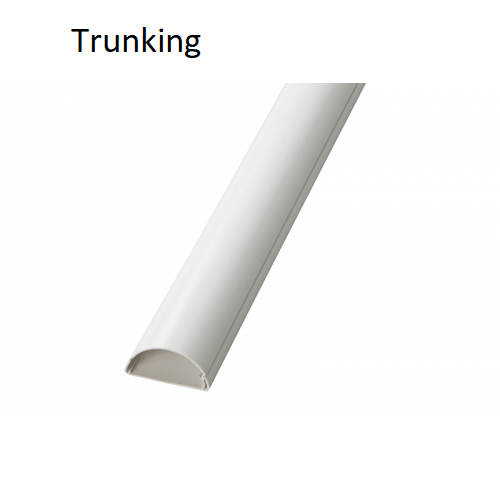
Trunking for cables refers to the conversion of a direct telephone line signal, usually an analog signal, into an Ethernet signal and vice versa. This is a useful technology for data networks and can greatly increase bandwidth efficiency. In addition to its obvious use of improving voice and data transmission, it is also useful in providing high-speed Internet access to consumers using cell phones, radio, or other such devices. A number of Internet service providers (ISP) are making their products available in the form of a trunking system, thus making this technology available on a broader scale.
A traditional telephone line system is comprised of several independent lines that are connected either via a public switched telephone network (PSTN) or private switched telephone network (PSTN). These lines are connected between various offices and departments to allow for fast, reliable, and secure data transmission over short distances. The major drawback of a traditional PSTN system is the lack of system integration. In order to effectively transfer data from one point to another, a number of separate lines are needed and each of these connections has to be properly configured for the particular task at hand. In addition, each connection has to be powered and operated by a separate circuit breaker. To find trunking for cables now, check with the Cable Management Warehouse Ltd.
By using a trunking system, an entire PSTN system can be unified into a single communications network, allowing for more efficient transfer of information. In addition, a trunking system allows for much greater system integration. For example, some providers offer IP-based trunking service that interconnects PSTN systems and IP networks. In this manner, one provider can become the originator of a number of telephones as well as their connection to the Internet. This provides for a great deal of system integration, which ensures that a large number of companies' telephones will be able to communicate with one another using IP networks at the same time. Additionally, many IP-based trunking services provide for automatic linking of IP networks to PSTN networks.
Most service providers also provide PBX services. PBX (Private Branch eXchange) is a private telephone exchange where multiple phone numbers are connected to one IP network. These IP networks often are in the form of circuit switching networks. Many circuit switching networks offer VoIP services as well as circuit switching capabilities. The ability to combine private branch exchange with VoIP services allows for expanded capabilities. On this link: https://www.cmwltd.co.uk/cable-containment-systems/trunking/mini-trunking-accessories/sa-black-25mm-x-16mm-mini-trunking-3m-lgth, you will discover more about trucking for cables.
Finally, many providers also offer a hosted PXB (Platform, Domain, Bridges) solution. The hosted PXB service can be used to connect multiple sites (clients) to the main exchange or to each other. A web administrator provides IP-based functionality such as voicemail, calendaring, unified messaging and conferencing. The web services are supported by common technologies like Java, XML, IMAP and PHP. Many telecommunication providers also offer unified communications services, such as voice mail forwarding, call transferring and video conferencing.
Trunking for Cables allows providers to provide advanced functionality to their customers. Providers can use these solutions to offer competitive rates to their clients. These new offerings are used to expand the scope of telecommunication. When a business adopts this technology, it will open up new vistas of opportunities. This technology can also improve reliability, quality of services, security and scalability. Read more content related to this article here: https://en.wikipedia.org/wiki/Trunking.